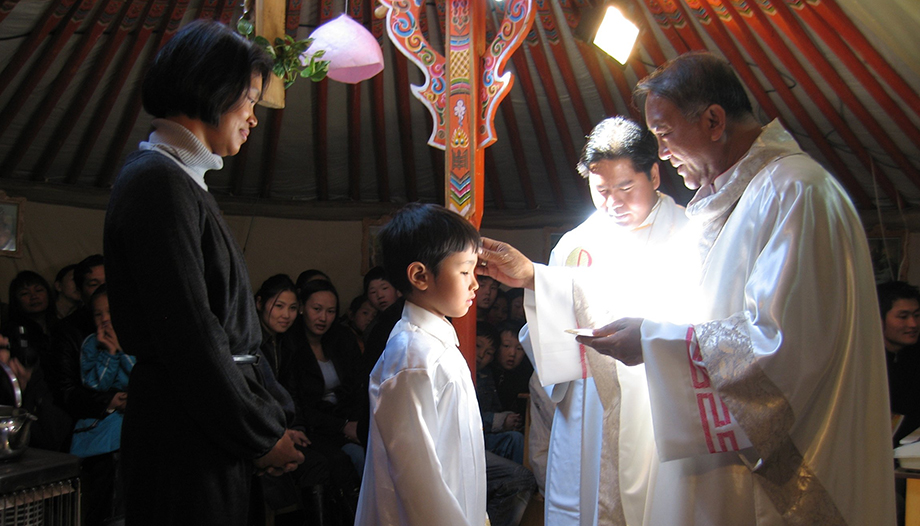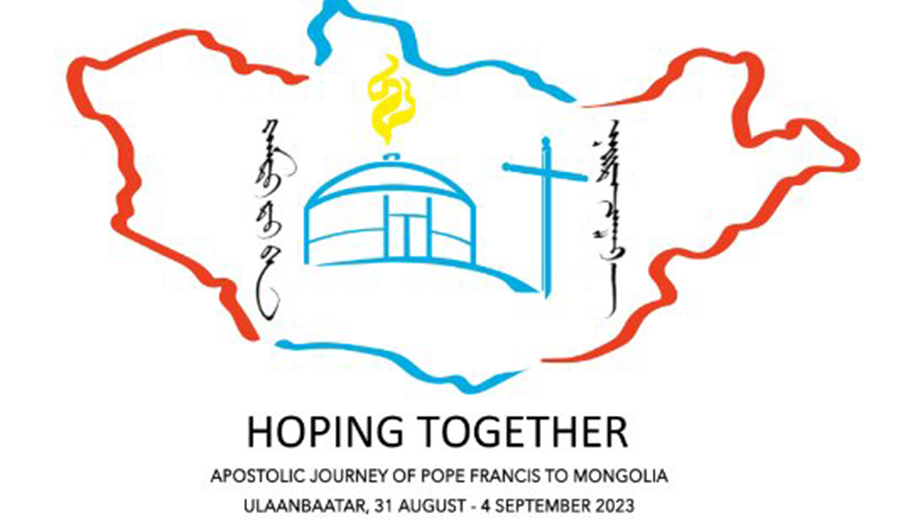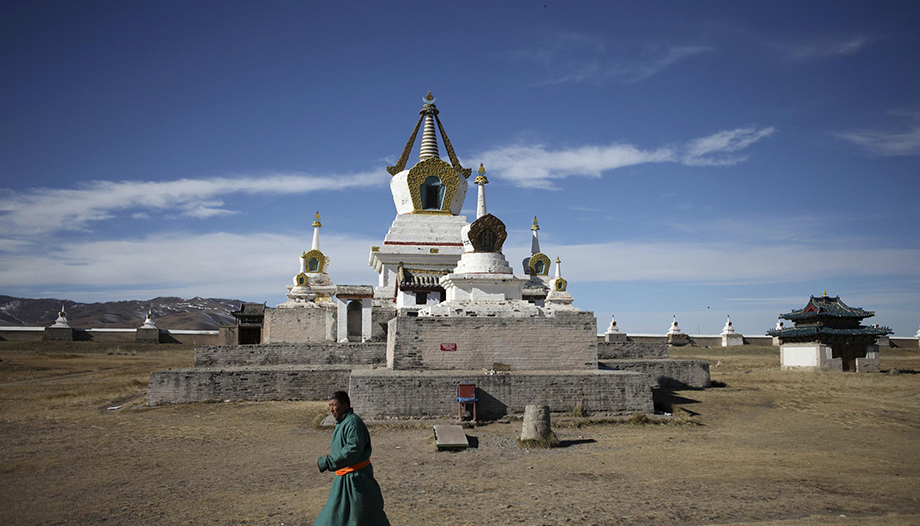It will be a short and unusual trip. Pope Francis opens September with a visit to Mongolia. This vast nation, where the endless steppes meet the deserts and mountain ranges of the north, hosts a small Catholic community, shepherded by the youngest cardinal in the Church today, Msgr. Giorgio Marengo.
A rich history of tribes and ancient empire
The golden age of Mongolian history is inextricably linked to the name of Genghis Khan, whose empire, in the 13th century, came to occupy regions of what is now China, Eastern Europe, and parts of India and Russia, among others. The population of what was then the great Mongol empire reached over 100 million inhabitants.
A century later, the Mongol empire would begin a decline that would be accentuated by China's conquest of the throne. In the 17th century, China gained total control of Mongolia. The empire was divided and the presence of the Chinese Qing dynasty would be a constant until the beginning of the 20th century.
The fall of the Qing dynasty led to a very brief period of independence for the central and northern parts of Mongolia, but in 1918, these areas would return to Chinese control.
In 1924, supported by the Soviet Union, the Mongolian People's Republic was formed. It was then that the city of Ulan Bator (literally in Mongolian "Red Warrior") was established as the capital.
During its communist period, Mongolia remained close to the Soviet orbit and not in the Chinese communist bloc. The Soviet government took advantage of this situation to use Mongolia as a base to "control" its Chinese counterpart.
The communist system in Mongolia lasted until 1990, when the communists relinquished control of the government. In 1992 a constitution was adopted that created a hybrid presidential-parliamentary state.
Mongolia is characterized by the multitude of nomadic tribes that, since ancient times, have roamed and inhabited its vast landscapes. A history of diverse traditions and coexistence, marked in recent times by the search for peace, in Bruni's words.
Catholicism in Mongolia
At present, Catholicism represents 0.04% of the religion of the inhabitants of Mongolia. A nation dominated by Tibetan Buddhism, traditional shamanism and Islam (to a lesser extent). In recent decades, Mongolia has seen the growth of Christian communities, Catholic, Evangelical and other Protestant denominations. This multiplicity of denominations will be present at the ecumenical and interreligious meeting.
The history of Catholicism in Mongolia is linked to the history of the Congregation of the Immaculate Heart of Mary (or Missionaries of Scheut), founded by the Belgian Theophilus Verbist. This missionary history is one of the characteristics of his Catholic community, as he wished to emphasize in the briefing for the press, the director of the Sala Stampa, Matteo Bruni.
Verbist would be one of the first missionaries to enter the Asian nation. This charism of apostolate among non-Christians, characteristic of the Missionaries of the Immaculate Heart of Mary, led other members of the congregation to Mongolian lands over the centuries. In fact, in 1863 the Congregation of Propaganda Fide entrusted to this congregation the administration of the mission in Mongolia.
Theophil Verbist died in Laohoukeou, a town in Inner Mongolia, on February 23, 1868. The presence of the community has been a constant until today, both in its female and male branches.
In Soviet times, the prohibition of religious practice was particularly harsh on Christian denominations whose presence, at least in official figures, was practically nil.

In 1991, Mongolia and the Holy See established diplomatic relations and a community of Missionaries of the Immaculate Heart of Mary was once again established. Wenceslao Selga Padilla arrived there and was appointed ecclesiastical superior of the mission sui iuris of Urga (former name of Ulan Bator).
Father Wenceslao would be named the first prefect of Ulaanbaatar by St. John Paul II in 2002, when this prefecture was established. Padilla, is one of the figures most remembered and loved by the Mongolians, his special attention and care for street children, the homeless, the disabled and the elderly, was a constant until his death in 2018 and without him the reestablishment of Catholic worship in the Mongolian capital is not understood.
At present, the Vatican Pontifical Yearbook lists 1,394 Catholics throughout the country. They are distributed in 8 parishes that are served by 25 priests (6 diocesan and 19 religious priests). Together with them, there are 5 non-priestly male religious, 33 religious sisters, 1 lay missionary and 35 catechists. An encouraging fact is that Mongolia currently has 6 major seminarians.
A small community faithful to Rome to whom the Pope will address words of encouragement.
The papal trip
On August 31, the Pope begins this papal trip, the 43rd of his pontificate, to Mongolia. A long journey that, together with the Pope's somewhat delicate health, will mean that the events, except for the official welcome at the airport, will begin a day after the Holy Father's arrival in the country.
Among the events of this trip, whose agenda The meeting with the bishops, priests, missionaries, consecrated men and women and pastoral agents in the Cathedral of St. Peter and St. Paul stands out, as can be seen on the Vatican website. This temple, built in the last decade, is reminiscent in its structure of the traditional Mongolian yurts and its silhouette is part of the official logo of the trip.
The following day, the Hun Theater will host an ecumenical and interreligious meeting, one of the highlights of the trip. Representatives of almost all religions present in the country will attend: Tibetan Buddhism, traditional shamanism as well as various Protestant denominations.

Perhaps one of the most striking issues of this trip is the total absence of Orthodox representatives at this meeting. The Orthodox community has a small presence in Mongolia, located in Ulan Bator, and depends on the Russian Orthodox Church, led by the Patriarch of Moscow. In this regard, Mateo Bruni, during the briefing of presentation of this trip to the press, emphasized that "the door is always open".
Sunday afternoon, September 3, will be the time for the celebration of the Holy Mass at the Steppe Arena. Pilgrims are expected not only from Mongolia but also from China, Russia, Macao, South Korea, Vietnam, Kyrgyzstan and other countries.
The finishing touch: the Misericordia house
Undoubtedly, one of the most anticipated points of this trip will be the meeting that will put the finishing touch to this visit: the inauguration of the Casa de la Misericordia.
This project, which began four years ago, will especially serve women and minors who are victims of domestic violence. It also has an area set aside for homeless people and will also serve as a temporary shelter for immigrants.
A significant final touch, as Mateo Bruni pointed out, was to conclude this trip with a call to "care for the poorest".








